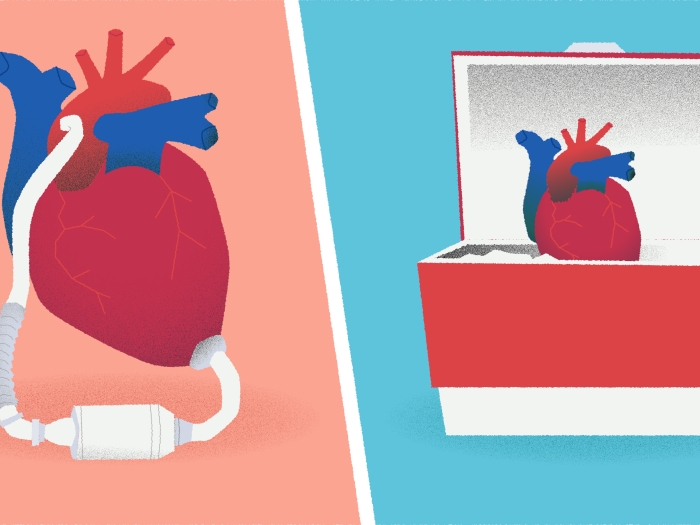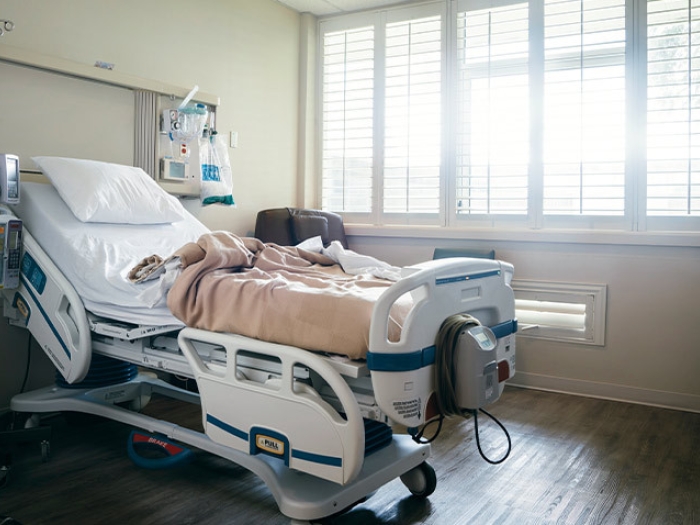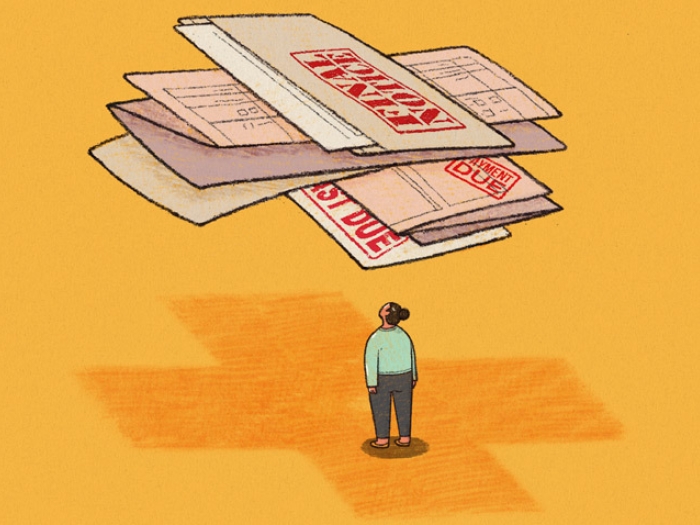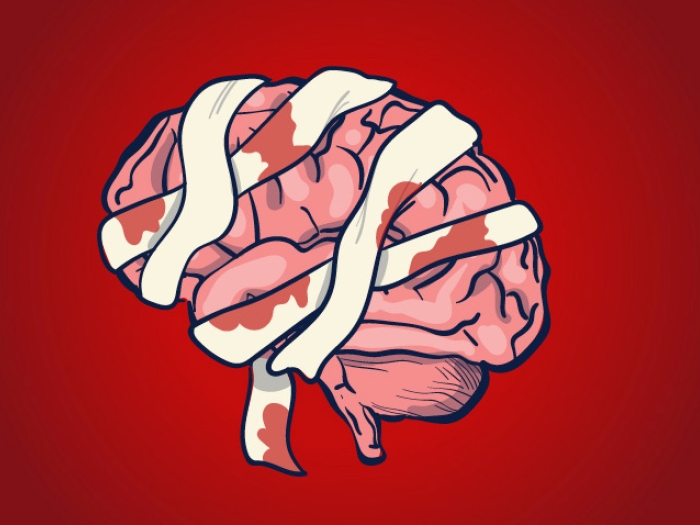A federal law prohibiting prisoners from receiving Medicaid often results in low-quality health care and undue financial burden on states. It also can hinder an inmate’s successful re-entry into society.
7:00 AM
Author |
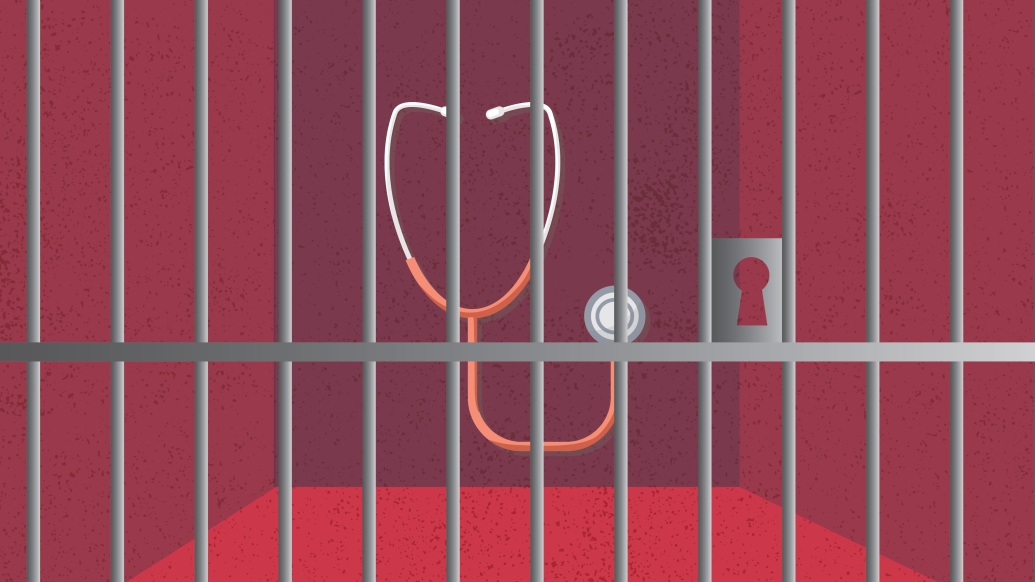
The incarcerated population in federal and state prisons has risen from about 200,000 to over 1.5 million since Medicaid was passed in 1965. That is a 650 percent increase.
MORE FROM THE LAB: Subscribe to our weekly newsletter
However, individuals are ineligible for Medicaid while they are incarcerated because of a federal law known as the Medicaid Inmate Exclusion Policy (MIEP). Today, nearly everyone in prison or jail would otherwise be eligible for the program in states that expanded Medicaid through the Affordable Care Act (ACA).
The impact of the MIEP is much larger than when Medicaid was originally passed because incarceration rates in the United States have risen dramatically. The cost of mass incarceration is now estimated to be $1 trillion annually.
Inmate exclusion originally applied to cash payments under the Social Security Act of 1935 but now applies to programs such as Medicaid that were later amended to the Social Security Act in 1965. The MIEP bars inmates from receiving federal Medicaid matching funds, except when they are hospitalized for 24 hours or longer.
Therefore, the cost of providing medical care in prison or jail falls on the shoulders of counties and states.
To generate additional revenue, correctional facilities in many states charge copays for health care services. These fees create significant financial barriers for many inmates.
As health care providers and researchers, we believe it's time to repeal the MIEP. It would lower costs for states and counties by providing additional funding for health care in prisons and jails. Furthermore, it would improve public health and reduce high rates of recidivism. We will explain how.
Lower costs for states and counties
State spending on prisons has increased at three times the rate of state spending on education. This is partly due to rapidly rising health care costs for prisoners, which totaled $7.7 billion in 2011, the most recent year for which data are available.
SEE ALSO: Medicaid Expansion More Than Pays for Itself, Study Finds
Compared with the general population, people involved with the justice system are more likely to have chronic medical conditions. For example, roughly 30 percent of federal and state prisoners have high blood pressure, compared with only 18 percent of nonincarcerated adults.
The incidence of tuberculosis among inmates is four times higher, hepatitis is more than eight times higher and HIV is two to seven times higher compared with the general population.
The prison population is also aging. Between 1999 and 2012, there was a more than 200 percent increase in the number of state and federal prisoners older than 55; the number of inmates younger than 55 rose just 9 percent.
Medical care can cost two to three times more for these older inmates, a key driver in rising prison health care costs.
Medicaid currently provides coverage for inmates only if they are hospitalized for 24 hours or longer. States that apply for reimbursement for hospitalization save millions of dollars through this provision alone.
Repealing the MIEP could save states and counties millions more. Currently, they pay for all health care services provided in jail or prison.
If the policy were repealed, states and counties could seek additional federal matching funds for a broad range of services covered by Medicaid. States that have already expanded Medicaid under the ACA would be reimbursed for at least 90 percent of the $5.2 billion they spend on prison health care, saving them a combined $4.7 billion each year.
Improved quality of care
A 1976 Supreme Court case, Estelle v. Gamble, affirmed that access to health care is a constitutional right for incarcerated individuals.
Even though jails and prisons are constitutionally mandated to provide medical care for inmates, care is generally low-quality and doesn't consistently adhere to established clinical guidelines.
Likewise, inmates report gaps in access to medical services and prescription medications. Roughly 20 percent of state prisoners and up to 70 percent of jail inmates never receive a medical examination for their chronic medical conditions. Those who do receive care are often treated by providers who are unfamiliar with the prisoners' medical histories, which poses a challenge when treating chronic conditions.
The MIEP doesn't just keep Medicaid funding from supporting prison health care. It unintentionally allows prisons and jails to abide by lower standards of care. Hospitals and clinics in the civilian sector that receive federal funding from Medicaid must abide by guidelines set by the Center for Medicaid & Medicare Services. Prisons and jails don't. Repealing the exclusion policy would improve the quality of care provided in jails and prisons because they would have to adhere to federal health care standards.
A repeal would also improve care coordination and continuity of care, which could alleviate many of the health- and nonhealth-related barriers to successful re-entry into society. If individuals have health insurance and are connected to services in the community, they will be better equipped to manage their medical needs and won't rely on emergency departments for nonurgent care.
Furthermore, low-income individuals and racial and ethnic minorities are disproportionately incarcerated. This means the MIEP perpetuates health disparities along racial and socioeconomic lines.
Reducing recidivism
Mental health conditions, such as major depression, schizophrenia and substance use disorders, are significantly more common among jail and prison inmates compared with the general population.
Repealing the MIEP would improve access to treatment for mental health and substance use disorder services for inmates. This could help stop the revolving door of recidivism.
Nearly 70 percent of individuals reoffend within three years of their release from prison. And while the factors contributing to recidivism are complex, effective treatment for mental health conditions and substance use disorders can interrupt the cycle of reoffending.
In fact, prior research suggests that treatment of behavioral health disorders is cost-effective and associated with reduced rates of recidivism.
Bridging political divides
Criminal justice reform is a bipartisan issue. Recent criminal justice provisions in the Comprehensive Addiction and Recovery Act of 2016 and the 21st Century Cures Act enjoyed support on both sides of the aisle. Updating Medicaid policy to reduce recidivism and cut costs would be in line with other recent bipartisan criminal justice reform initiatives.
As the new administration and Congress consider changes to the structure and financing of Medicaid, repeal of the MIEP should be part of the discussion.
This article was co-authored by Winkelman, Amy Young and Megan Zakerski. It was originally published on The Conversation. Read the original article.

Explore a variety of healthcare news & stories by visiting the Health Lab home page for more articles.

Department of Communication at Michigan Medicine
Want top health & research news weekly? Sign up for Health Lab’s newsletters today!
